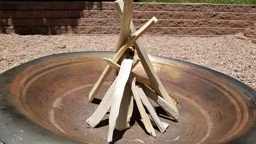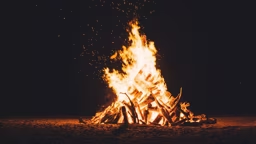

Is there anything more beautiful than watching snow fall from the warmth of your cabin? Actually, there is. Next time the snow falls in fluffy flakes, head on out for a hike through your very own winter wonderland. All you need is some warm clothes, maybe a thermos of hot chocolate, and of course, snowshoes.
Hold on! Don’t run away! Sure, a quick perusal of the myriad snowshoe options available at a store near you might seem overwhelming and confusing, but manufacturers have actually made it fairly simple and straightforward for you to find the perfect pair.
Today’s advancements in snowshoe design mean that anyone and everyone can find a pair to suit their needs. With just a few helpful tips, you’ll soon be gracefully carving your own path through that blanket of white.
See also Checklist for Winterizing the Cabin
Choose Your Shoes
Do you want a relaxing, peaceful walk or a thrilling, challenging hike? Or do you want to get outside and go for a run no matter the season? No matter what you want to do outside, there’s a snowshoe for you.
Recreational.
These are perfect entry-level shoes, and ideal for family outings. They let you walk easily on anything from flat to moderately rolling terrain. Adjustable bindings ensure a good fit for everyone, and this snowshoe category includes many inexpensive options for the beginner. However, these shoes typically don’t have the traction and grip of more advanced models and shouldn’t be used on difficult climbing terrain.
Adventure/Mountaineering.
These shoes are designed for those who want to venture off the beaten path. With strong bindings and superior traction and durability, these shoes can handle just about anything winter can throw at them. They can even be used for trail running or aerobic exercise in most instances. However, even these tough trailblazers shouldn’t be trusted in very steep or very icy climbing conditions.
Backcountry.
These are the shoes you’d need to scale Everest. Designed with climbing-style crampons and heavy-duty bindings that can handle the most rugged conditions, these shoes are designed to handle the steep, icy terrain that advanced hikers seek out.
Running/Aerobic.
These lightweight shoes are durable yet maneuverable and are designed for year-round runners who don’t want to let a little of the fluffy white stuff keep them from getting their endorphin kick. It goes without saying that you shouldn’t try to scale a summit in these, but they can handle open expanses of snow or winding trails.
See also Robin Hood Chicken
Get Fit
Snowshoes float on the snow by spreading your weight evenly over the entire frame. But, if you don’t have the right frame size for your snowshoes, you’ll either find yourself sinking fast or tripping over your Bigfoot feet and face planting in the powder.
Shoes are available for men and women, and for kids of varying ages, but to truly figure out what size shoe you need, you’ll need to determine how much weight they will be required to support.
Snowshoe load ratings are typically based on dry, light snow conditions. But be aware that you’ll need larger shoes to walk on powder than on the heavy, wet, compacted stuff.
Also, terrain plays a large part in shoe selection. If you’re hiking in wide-open spaces, size will likely play less of a role than if you’re trekking down narrow, cramped trails crowded with brush.
So, know your terrain and what snow conditions are typical for where you want to hike. Then, figure your weight, as well as the additional weight of the gear you’ll be typically carrying. Once that’s done, look for the smallest size that will support your total weight while handling your terrain and snow conditions.
Dress the Part
A perfect winter hike isn’t all about the snowshoes. You’ll want to put as much thought into the rest of your gear as you do what you strap on your feet. So what do you need to complete the ensemble?
See also Raspberry Chicken with Grilled Peaches
Footwear
Whatever your footwear, make sure it’s water-resistant. For aerobic or running snowshoes, try a trailrunning or sport hiking shoe. For all other models, go with sturdy, leather hiking boots. Snowboarding boots or pack boots can work great too!
Pair your footwear with wool or synthetic socks that will wick away moisture and leave your feet warm and dry.
Clothing
Dressing in layers is the name of the game here. Make sure you can easily adapt to changing body or air temperatures. And be sure to choose fabrics that wick away moisture. Also, a shell jacket or windbreaker is the perfect top layer to protect you if Mother Nature decides to play rough.
Water-resistant gloves or mittens should be paired with a wool or synthetic hat to aid in heat retention. Get one with a brim for sunny days.
And don’t forget the sunglasses. UV rays are stronger when they bounce off snow, and you’ll want to keep your peepers protected.
Armed with the right gear, you’ll be ready to head off for a hike in your very own winter wonderland.
Andy Bennett loves snowshoeing. He likes any activity that seems to thwart the laws of physics. Take that, gravity!






